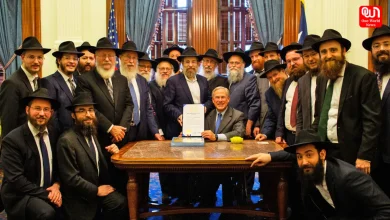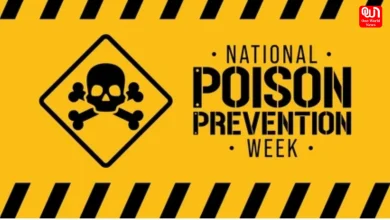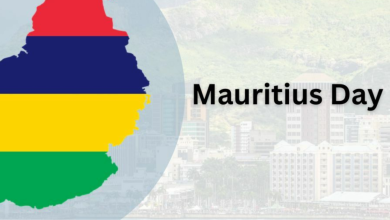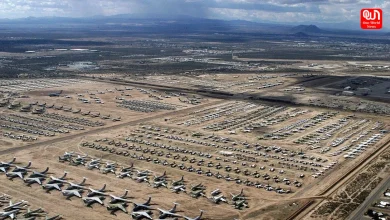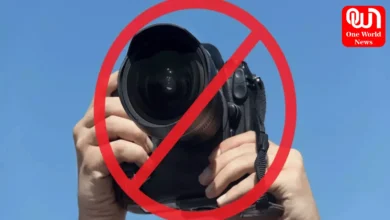Kaam Ki Baat: How effective is NHM’s Rashtriya Bal Swastha Karyakram

Know how the Rashtriya Bal Swastha Karyakram works?
The mission of One World News to explore the National Health Mission continues with Rashtriya Bal Swastha Karyakram. This Kaam Ki Baat article will focus on the RBSK scheme and how it is helping the poor children across the country.
As per the March of Dimes, 6 to 7 babies out of 100 babies have a birth defect in India out of100. This means that around 17 lakhs babies have birth defects. It accounts for 9.6 percent of all newborn deaths. Several nutritional deficiencies affecting the preschool children range up to 70 percent from 4 percent. About 10 percent of the children are affected due to developmental delays, which is very common. If these delays are not dealt on time, it could lead to permanent disabilities including hearing, cognitive or vision impairment. Children also face diseases which are common at their stage – rheumatic heart disease, dental caries, reactive airways diseases, and more.
https://www.instagram.com/p/CFMByFrnYRN/
What is Rashtriya Bal Swasthya Karyakram (RBSK)?
Government of India started Rashtriya Bal Swasthya Karyakram (RBSK) to detect and manage these problems in children early, so that they can have a healthy life in the future. Early detection and management of diseases including deficiencies bring added value in preventing these conditions to progress to its more severe and debilitating form and thereby reducing hospitalization and improving the implementation of the Right to Education.
The RBSK is an initiative that aims to identify and intervene early for children from birth to 18 years of age. Four Ds are covered under the scheme – Defects at birth, Diseases, Deficiencies, Development delays including disability.
The 0-6 years age group is specifically managed at District Early Intervention Center (DEIC) level and 6-18 years age group are managed by existing public health facilities. DEIC acts as referral linkages for all the 0-18 years of children.
How the Rashtriya Bal Swasthya Karyakram (RBSK) works?
The first level of children screening is done at the delivery points through existing Staff Nurses, Medical Officers, and ANMs. After 48 hours of the birth till 6 weeks, ASHA workers are entitled to do the screening at the residence of the child as a part of the Home Based New-born Care (HBNC) package.
Dedicated Mobile health teams do the screening for ages of 6 weeks to 6 years at Anganwadi centers and for 6 to 18 years, screening is done at school. A child is screened and then after identifying the disease, he/she is given necessary treatment/intervention free of cost.
Read more: Kaam Ki Baat: How effective is Janani Suraksha Yojana

Target age group
The RBSK aims to cover children of ages 0-6 years in rural areas and slums in urban areas in addition to children enrolled in the government school of class 1 to 12. The Rashtriya Bal Swasthya Karyakram is estimated to touch 27 crore children. It is expected that these services will reach about 27 crores children in a phased manner.
Health conditions to be screened
Child Health Screening and Early Intervention Services under Rashtriya Bal Swasthya Karyakram is estimated to cover 30 selected health conditions for Screening, detection and free of cost management. States and UTs may also include diseases namely Beta-Thalassemia, Sickle cell anemia, and hypothyroidism bases on the epidemiological situation and availability of specialized support facilities within States and Union Territories
Mechanisms for screening at Community & Facility level:
Child screening under Rashtriya Bal Swasthya Karyakram is at two levels – community level and facility level. The community-level screening is conducted by the Mobile health teams at Anganwadi centers and government/government-aided schools. The facility-level screening is conducted at public health facilities like PHCs / CHCs/ DH, by existing health manpower like Staff Nurses, Medical Officers, Staff & ANMs.
Screening at Anganwadi Centre:
All the children below 6 years of age are screened by Mobile Block Health teams for diseases, deficiencies, and developmental delays including disability at the Anganwadi center twice a year- at a minimum. For developmental delays children are screened using age-specific tools and suspected are referred to DEIC for further management.
Screening at Schools- Government and Government aided:
School children of age between 6 to 18 years are screened by Mobile Health teams for deficiencies, adolescent health, developmental delays including disability at the local schools – once a year for a minimum. Clinical examination is taken or questions are asked from the students on their health.
Composition of the mobile health team:
The mobile health team consists of four members- 2 doctors, one female, and one male, one Staff Nurse/ANM and one pharmacist.

District Early Intervention Centre (DEIC)
After the first step of screening the children, the second step is confirmation of preliminary findings, management, referral support, and follow up. It is followed by confirmation, referral tracking, and follow up based on the age group of the child.
The early intervention centers are established at the District Hospital across the country, known as District Early Intervention Centers (DEIC). DEIC aims to provide referral support to children detected with health conditions during health screening, primarily for children of up to 6 years of age.
A team of a medical officer, pediatrician, staff nurses, paramedics, and a manager is engaged to provide services. The manager has to make sure that there is enough referral support in government institutions by mapping the territory. Funds are provided under the National Health Mission for management at the territory level.
Impact of Rashtriya Bal Suraksha Karyakram
The online portal of the National Health Mission says that the scheme has made significant progress in reducing child mortality. It says that while reducing child mortality is the dire need, an advancement is achieved through Rashtriya Bal Suraksha Karyakram by addressing early detection and management.
According to reports, 18.6 crore children were screened under the Rashtriya Bal Suraksha Karyakram until the third quarter of 2015-16. Around 30.5 lakh of children were treated under the RBSK with a government expense of Rs 600- 700 crore.
Although, we do not have recent official data which can tell us the real impact of the scheme, we surely can get some idea of the scheme’s effect by looking at the child mortality numbers in the last few years. As per the reports of the United Nations Inter-Agency Group for Child Mortality Estimation, the children under-five dying has fallen by 30 percent to 9,89,000 from 1.4 million since 2012. Over the same period, neonatal deaths have decreased by 22 percent from 7,79,000 to 6,05,000. Infant deaths have decreased by 26 percent from 10,09,000 to 8,02,000.
According to Statista.com, the infant mortality rate has been on a declining trend since 2013, when Rashtriya Bal Suraksha Karyakram was started. According to the website, it was 38.9 in 2013, 36.9 in 2014, 35 in 2015, 33.2 in 2016, 33.2 in 2016, 31.5 in 2017, and 29.9 in 2018.
Visit www.oneworldnews.com to read more such articles
Have a news story, an interesting write-up or simply a suggestion? Write to us at info@oneworldnews.com

